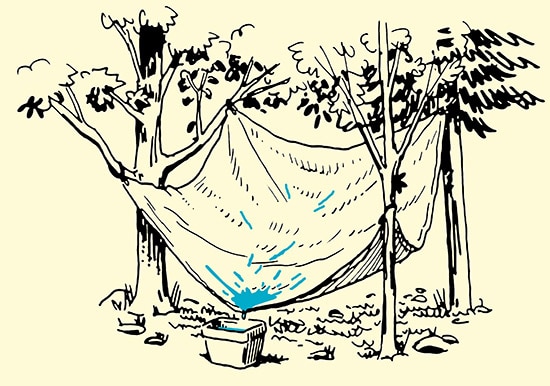In any survival scenario, water is by far your most important resource. You can easily go a day without food, and usually don’t need shelter right away, unless you’re in freezing conditions. Not having any water for 24 hours, however, while survivable, depletes both your physical and mental strength, making it more difficult to perform the tasks necessary to making it out the other side. And after just three days without hydration, your body will shut down, and it’ll be lights out for you.
 Etekcity Water Filter ...
Buy New $16.19
(as of 10:55 UTC - Details)
With about two liters per day (technically you only need two quarts, but with the exertion and stress of a survival scenario, two liters is a far safer option if possible), your body will be able circulate blood, process food, regulate body temperature (which prevents hypo- and hyperthermia), think clearly, and successfully carry out a host of other internal processes.
Etekcity Water Filter ...
Buy New $16.19
(as of 10:55 UTC - Details)
With about two liters per day (technically you only need two quarts, but with the exertion and stress of a survival scenario, two liters is a far safer option if possible), your body will be able circulate blood, process food, regulate body temperature (which prevents hypo- and hyperthermia), think clearly, and successfully carry out a host of other internal processes.
You can see how crucial water is to your survival. Luckily, with just a little bit of know-how, water can be found relatively easy in almost any environment on the planet. In today’s article, we’ll walk you through several methods for finding water that will work for temperate climates and a variety of others, as well as methods that are particularly suited for tropical, freezing, and desert regions.
A Note Before Starting: Always Filter
Any survival expert will tell you that no matter where you find water in the wild — be it from streams, lakes, condensation on plants, etc. — it should always be filtered or purified before drinking. Now, in many cases, this isn’t possible, as you may not have the right supplies on you. Just know that any water you ingest without purifying could carry harmful bacteria, and is a risk on your part. If your choice is life or death, that’s a risk you’re most definitely going to take. Some water collection methods are safer for straight drinking than others; we’ll outline those below.
General Methods and Tips for Finding Water in the Wild
 Potable Aqua Water Pur...
Best Price: $9.19
Buy New $9.49
(as of 09:45 UTC - Details)
Potable Aqua Water Pur...
Best Price: $9.19
Buy New $9.49
(as of 09:45 UTC - Details)
The following tips work especially well in temperate and tropical areas, but many also apply to other climates too.
Start With the Obvious: Streams, Rivers, Lakes
These are your most obvious sources of water in the wild. Clear, flowing water is your best option, as the movement doesn’t allow bacteria to fester. This means that small streams should be what you look for first. Rivers are acceptable, but larger ones often have a lot of pollution from upstream. Lakes and ponds are okay, but they’re stagnant, meaning there’s an increased chance for bacteria.
Now then, how do you go about finding these bodies of water? First, use your senses. If you stand perfectly still and listen intently, you may be able to hear running water, even if it’s a great distance away.

Next, you’ll use your eyes to try and find animal tracks, which could lead to water. Insect swarms, while annoying, are another sign of water close by. And in the mornings and evenings especially, following the flight path of birds may lead you to your much-needed H2O. Watching animal behavior is especially important in the desert. Animal tracks will be easier to spot in the sand, and they’ll almost always eventually lead to water. Birds will also especially
 Katadyn Vario Water Fi...
Buy New $83.08
(as of 01:45 UTC - Details)
flock towards the water in dry areas.
Katadyn Vario Water Fi...
Buy New $83.08
(as of 01:45 UTC - Details)
flock towards the water in dry areas.
Also just scout the environment you’re in. Water runs downhill, so follow valleys, ditches, gullies, etc. Find your way to low ground, and you’ll often run into the water.
Collect Rainwater
Collecting and drinking rainwater is one of the safest ways to get hydrated without the risk of bacterial infection. This is especially true in wild, rural areas (in urban centers, the rain first travels through pollution, emissions, etc.).
There are two primary methods of collecting rainwater. The first is to use any and all containers you might have on you. The second is to tie the corners of a poncho or tarp around trees a few feet off the ground, place a small rock in the center to create a depression, and let the water collect.

You can combine these methods and make your containers more effective by tying the poncho or tarp to funnel into your bottle or pot or whatever you have (as long as it doesn’t overflow and waste water!).




